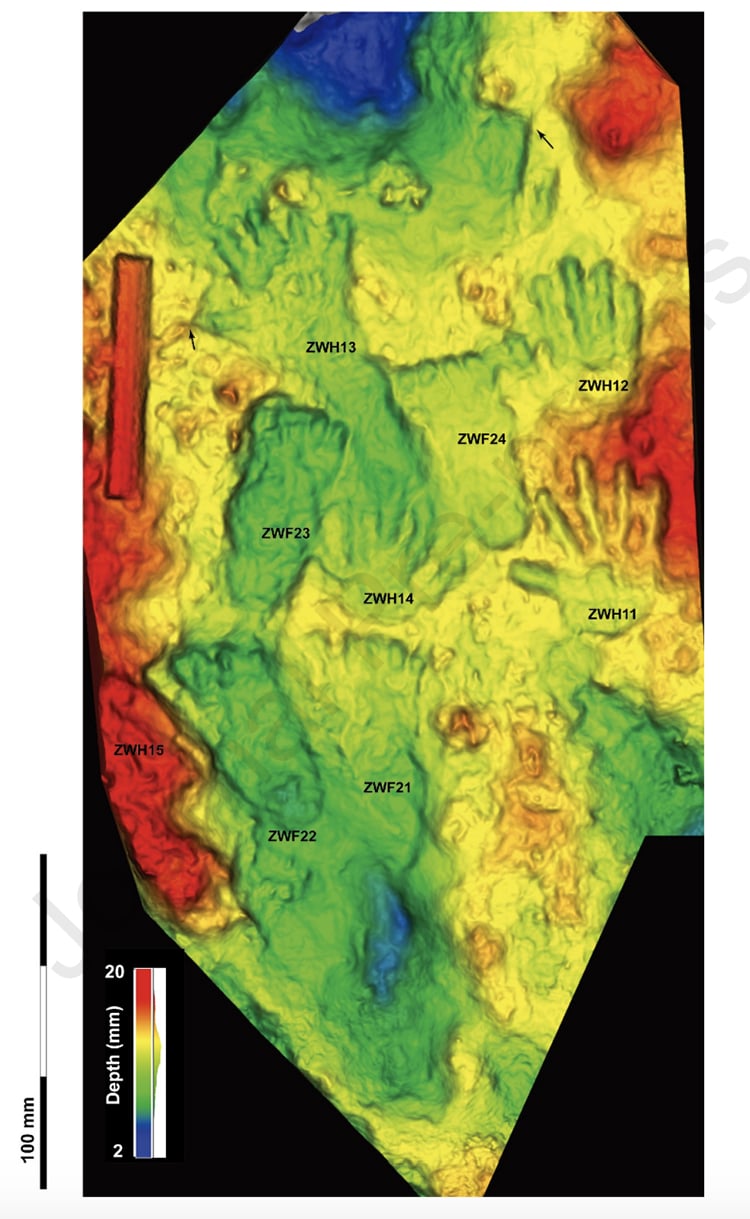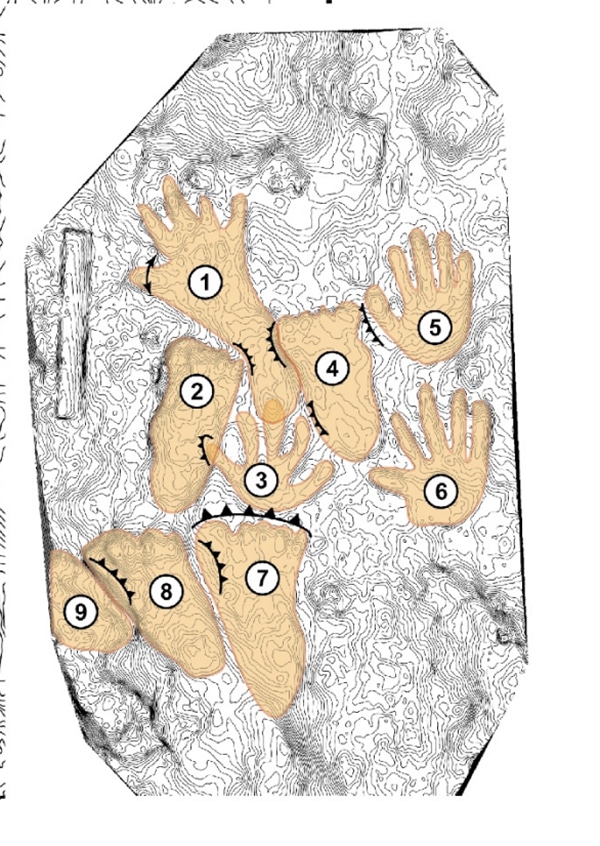
Hand and footprints discovered near the Quesang village in the Tibetan Plateau. (Photo: D.D. Zhang et al./Science Bulletin)
Modern sidewalks are scattered with etched initials and careful handprints left by children in newly poured cement, but it turns out children have been leaving their mark for centuries. Archeologists have found a shocking ancient analog in a slab of travertine marble near Quesang, Tibet. Publishing their findings in the journal Science Bulletin, the team announced the discovery of what may be the world’s oldest cave art—a series of seemingly deliberate handprints and footprints left by two young children around 200,000 years ago.
The find consists of 10 prehistoric prints—five footprints and five handprints. From the size of the prints, the team estimates they belong to a 7-year-old and a 12-year-old respectively. The prints were left by some members of the genus Homo. However, the children could have been Neanderthals, Homo sapiens (modern humans), or Denisovans (an early relative of humans found in Asia at the time). No matter their exact species, the children appear to have taken the time to press their hands into soft silt which eventually fossilized.
Are these prints the earliest example of cave art yet discovered? Maybe. The impressions date to between 169,000 and 226,000 years ago in the mid-Pleistocene period. This makes them three or four times older than the oldest known cave paintings. However, are the prints intentional aesthetic? Study co-author Thomas Urban believes their clear definition without slippage and their careful arrangement indicate intentionality. He said, “They’re clearly not accidentally placed.”
While some like Urban see childhood whimsy in the prints, others are more skeptical of their categorization as art. “I don’t think there are scientific criteria to prove it—it is a question of faith, and of wanting to see things in one way or another,” said Eduardo Mayoral, a paleontologist not involved in the study. However, the prints are nevertheless important evidence of the earliest known evidence of hominids on the Tibetan Plateau. The prints are also a testament to something seemingly eternal—the human desire to press and preserve one’s handprint in soft materials.
Researchers have discovered prehistoric handprints and footprints left by ancient children in Tibet.

Handprint and footprint depths shown. (Photo: D.D. Zhang et al./Science Bulletin)
The prints appear to be intentional; and if so, they are the oldest cave art in the world.

Some of the overlapping prints discovered. (Photo: D.D. Zhang et al./Science Bulletin)
h/t: [Colossal, Smithsonian Magazine]
Related Articles:
6 Incredible Facts About the Prehistoric Altamira Cave Paintings
15,000-Year-Old Bison Sculptures Are Perfectly Preserved in a French Cave
This 45,000-Year-Old Warty Pig Cave Painting May Be the Oldest Known Animal Art
